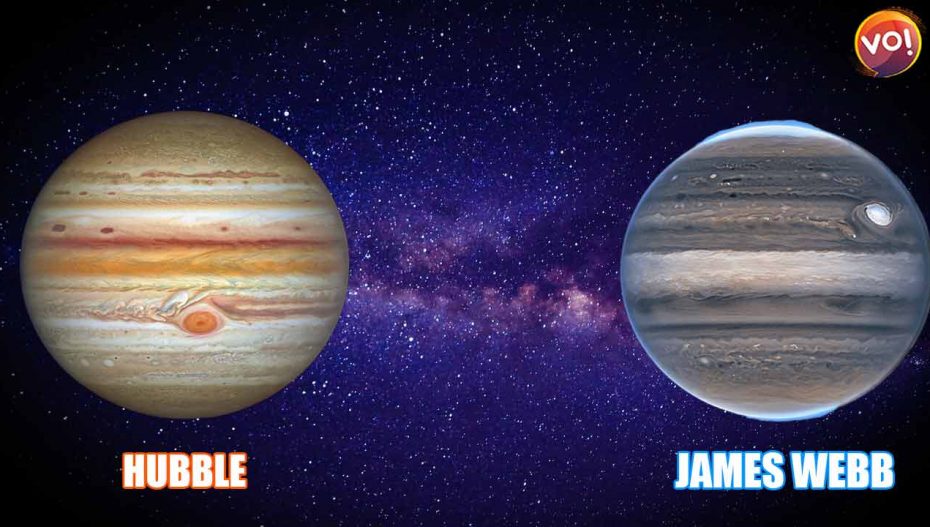While most of us are familiar with the yellow and reddish-brown gas giant, the James Webb Space Telescope’s near-infrared camera, with its specialized infrared filters, has shown Jupiter encompassed in blue, green, white, yellow and orange hues.
The James Webb Space Telescope, NASA’s latest and most powerful telescope, has captured new images of our solar system’s largest planet, Jupiter, presenting it in a never-before-seen light. The photographs, published Monday, have captured a new view of the planet, presenting in detail its massive storms, colourful auroras, faint rings and two small moons — Amalthea and Adrastea.
Watch NASA post here:
Since infrared light is not visible to the human eye, the images were artificially coloured to match those on the visible spectrum, so that the planet’s distinctive features could stand out, according to NASA.
Jupiter’s famous Great Red Spot, a storm so big that it could swallow Earth, appeared bright white in the image, since it was reflecting a lot of sunlight, the space agency stated.
A NASA blog post quoted Heidi Hammel, interdisciplinary scientist for the James Webb telescope, as saying: “The brightness here indicates high altitude — so the Great Red Spot has high-altitude hazes, as does the equatorial region…The numerous bright white ‘spots’ and ‘streaks’ are likely very high-altitude cloud tops of condensed convective storms.”
About Webb Telescope:
NASA’s $10 billion James Webb Telescope was developed with the assistance of the European Space Agency and the Canadian Space Agency. It was launched on December 25, 2021 and is currently observing from Lagrange point 2, approximately 1.5 million km beyond Earth’s orbit around the Sun. The telescope released its first image on July 11 2022.
Also Read: Five Ways James Webb Will Enhance Space Info













